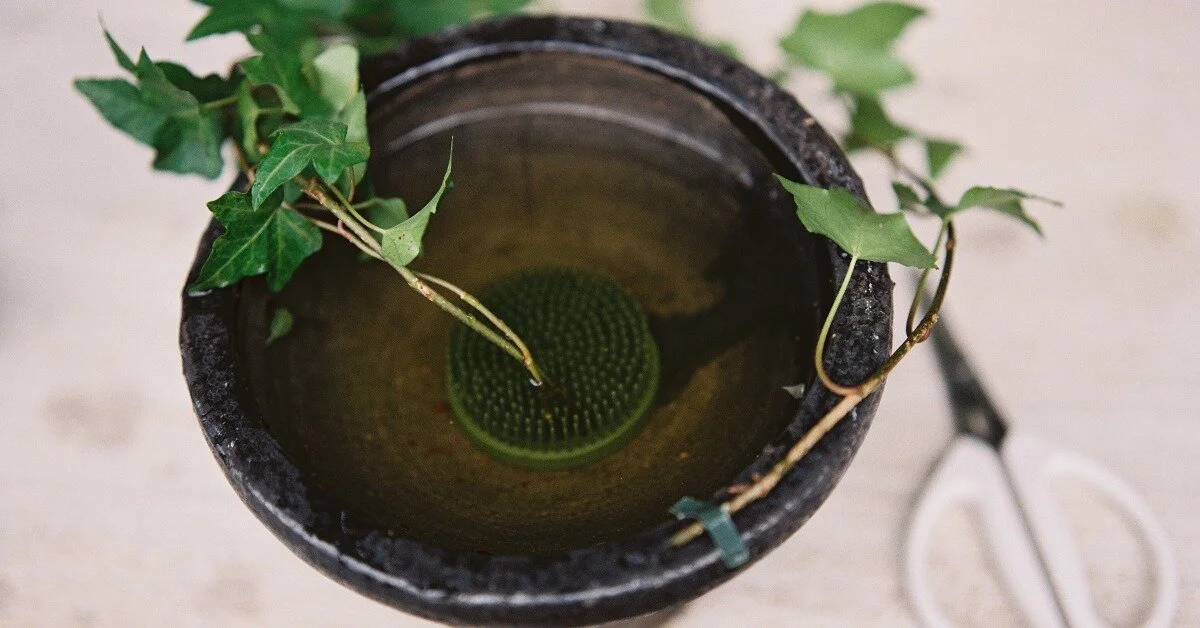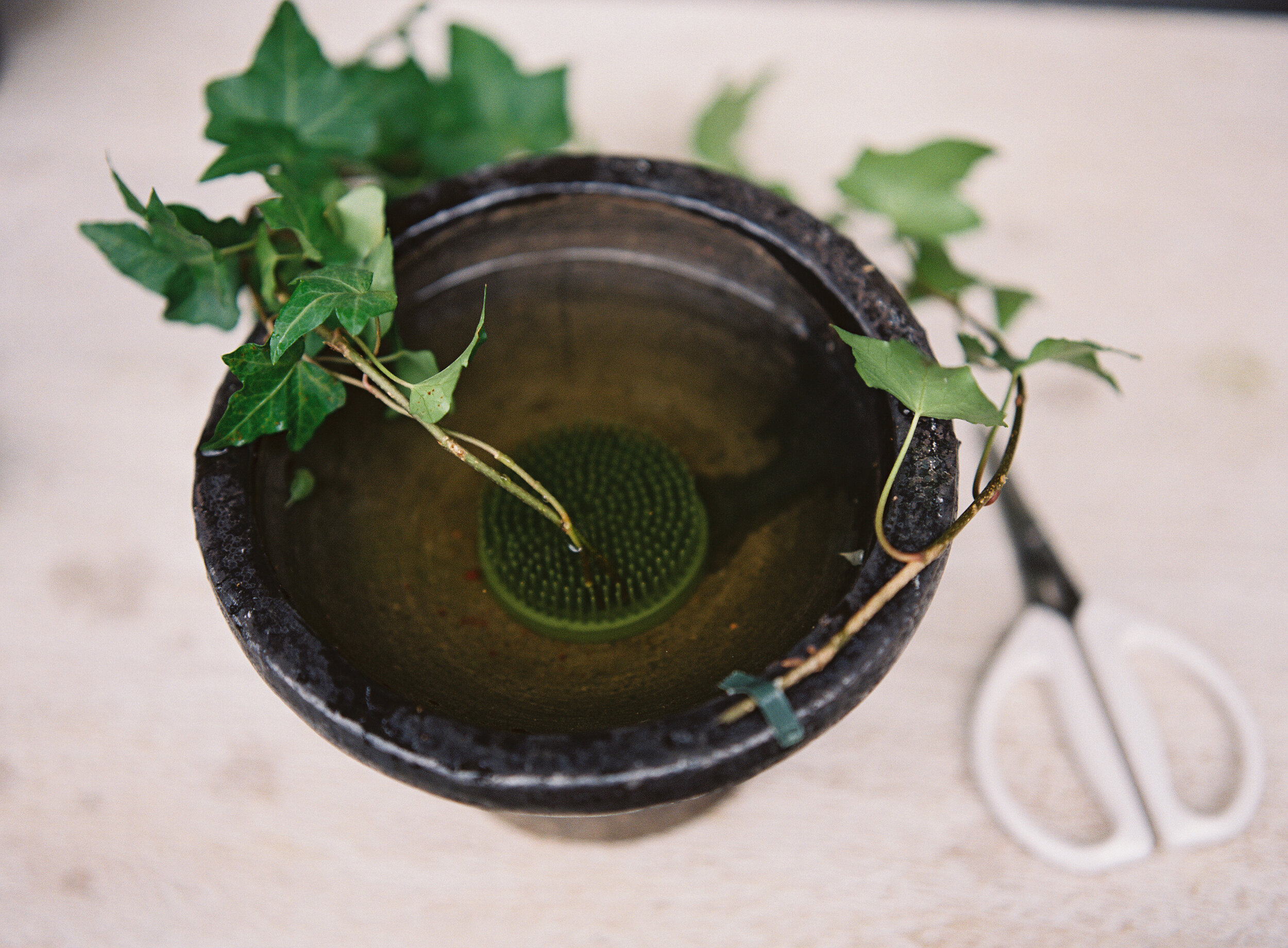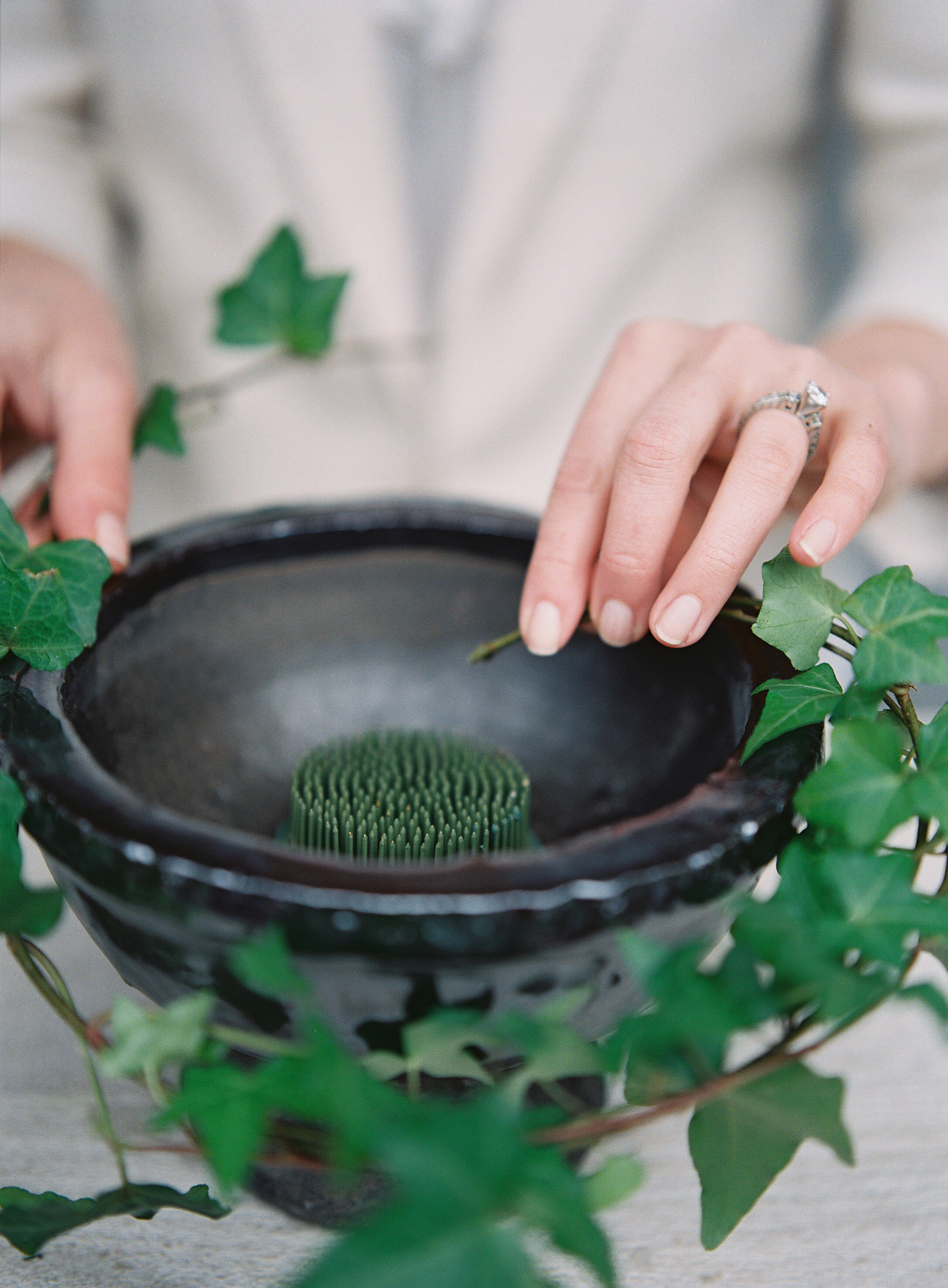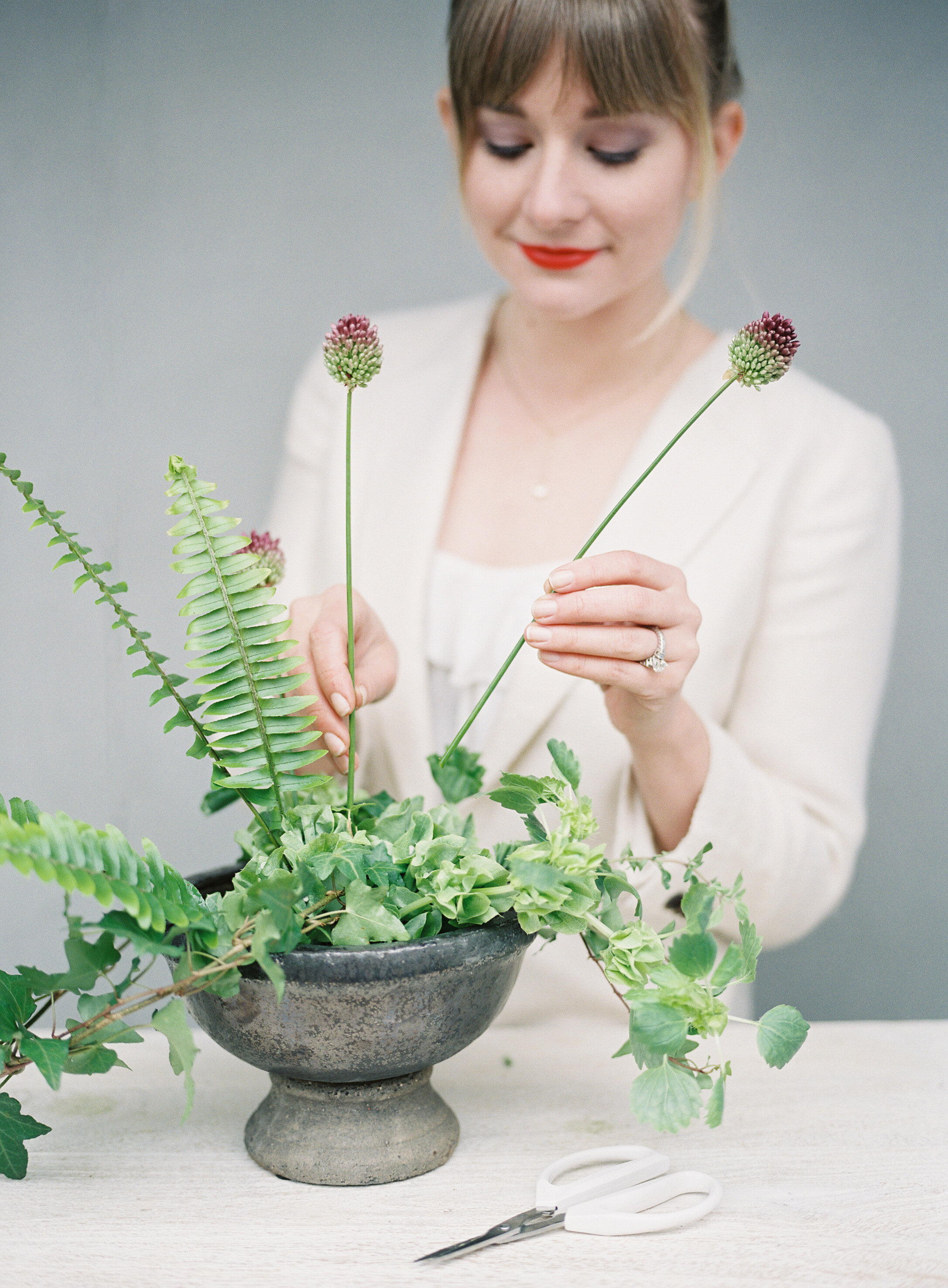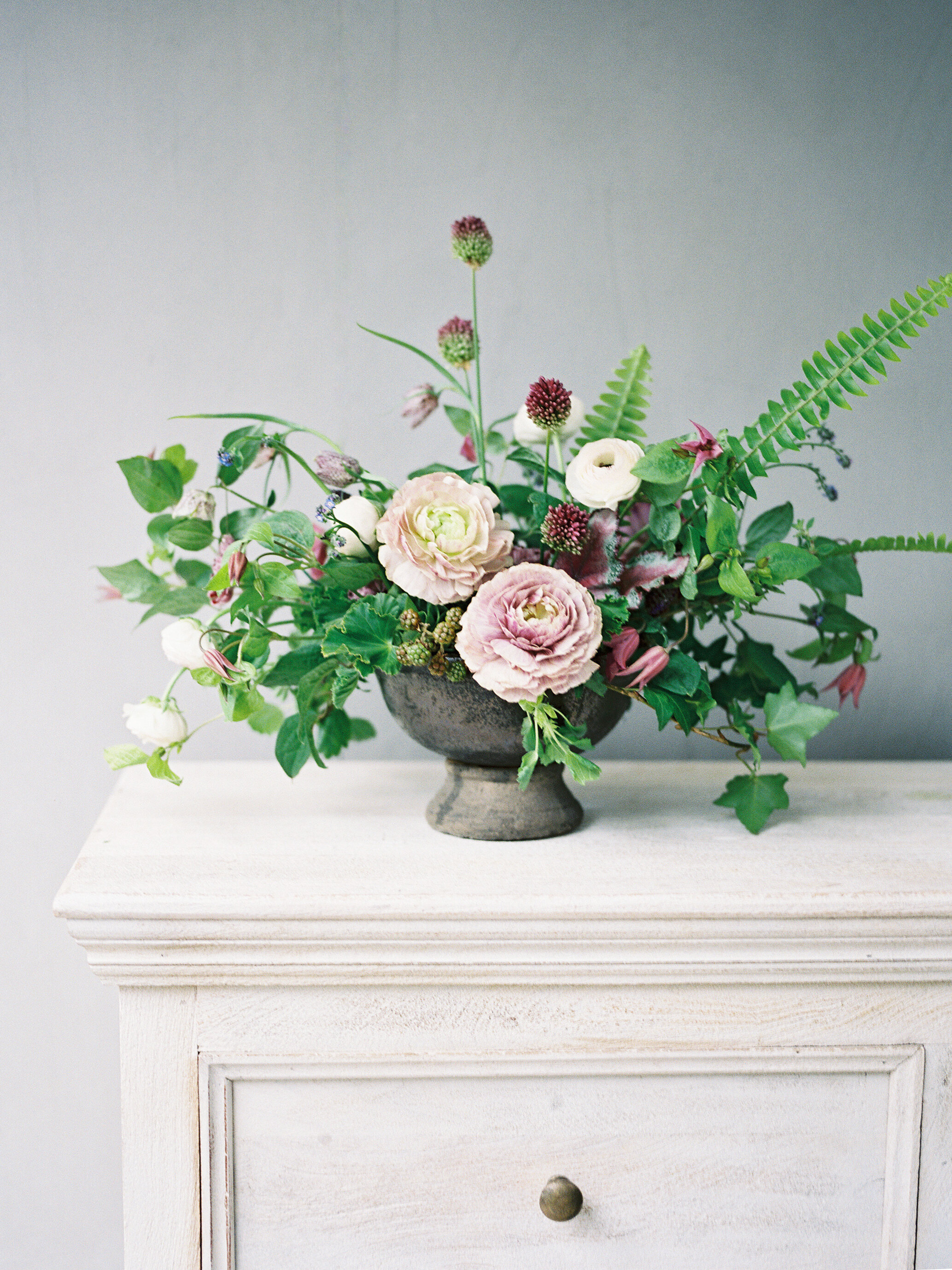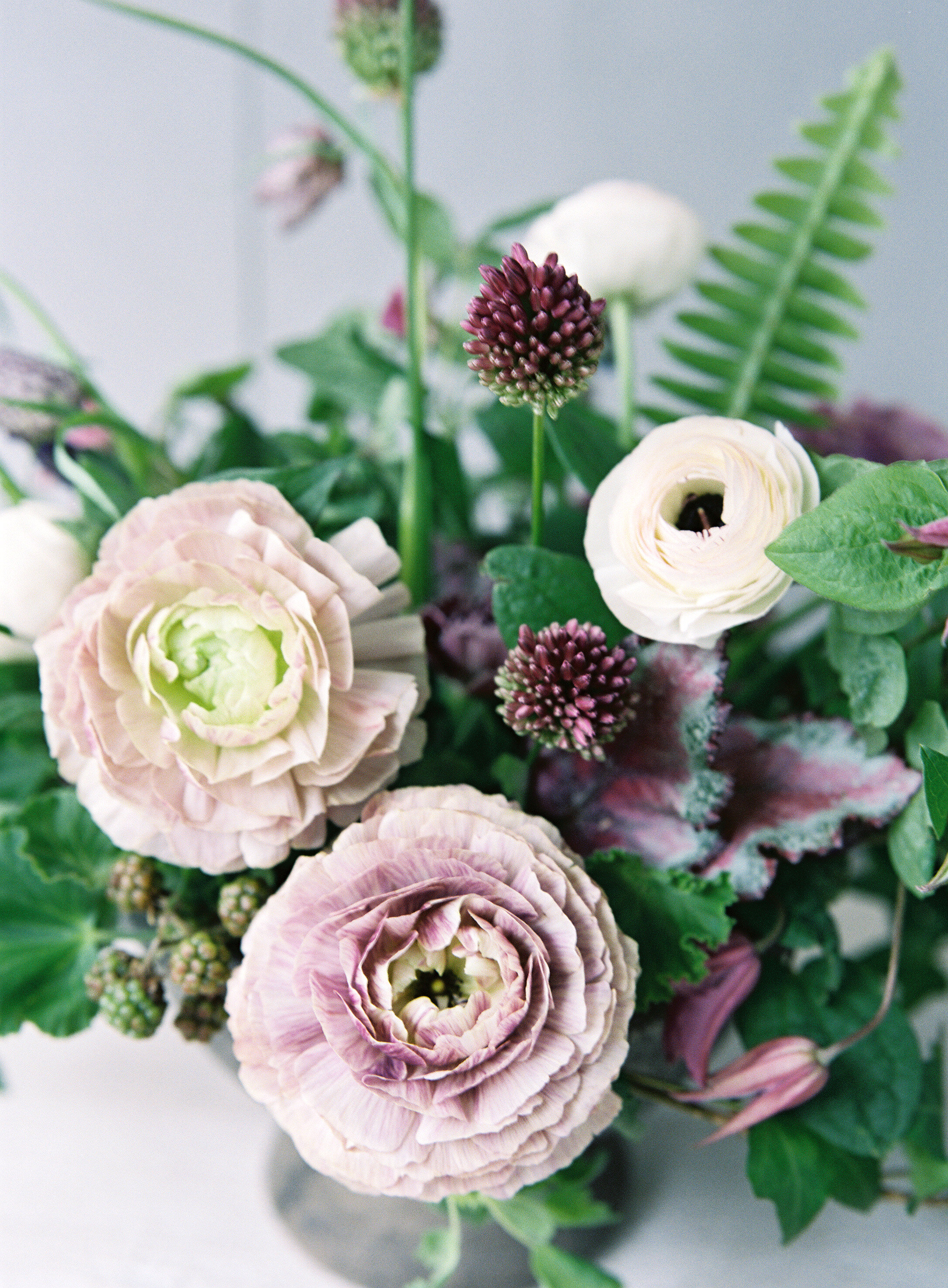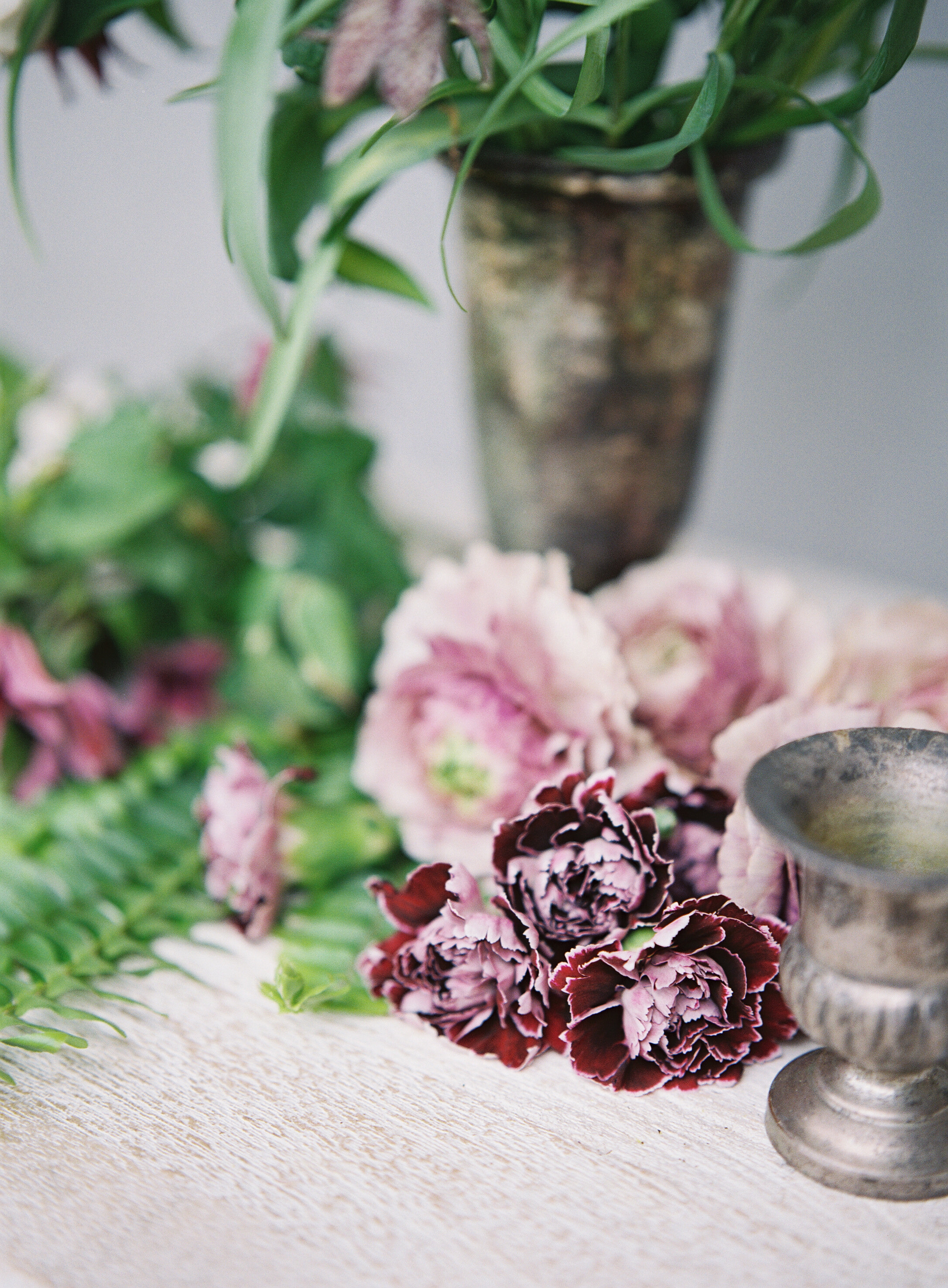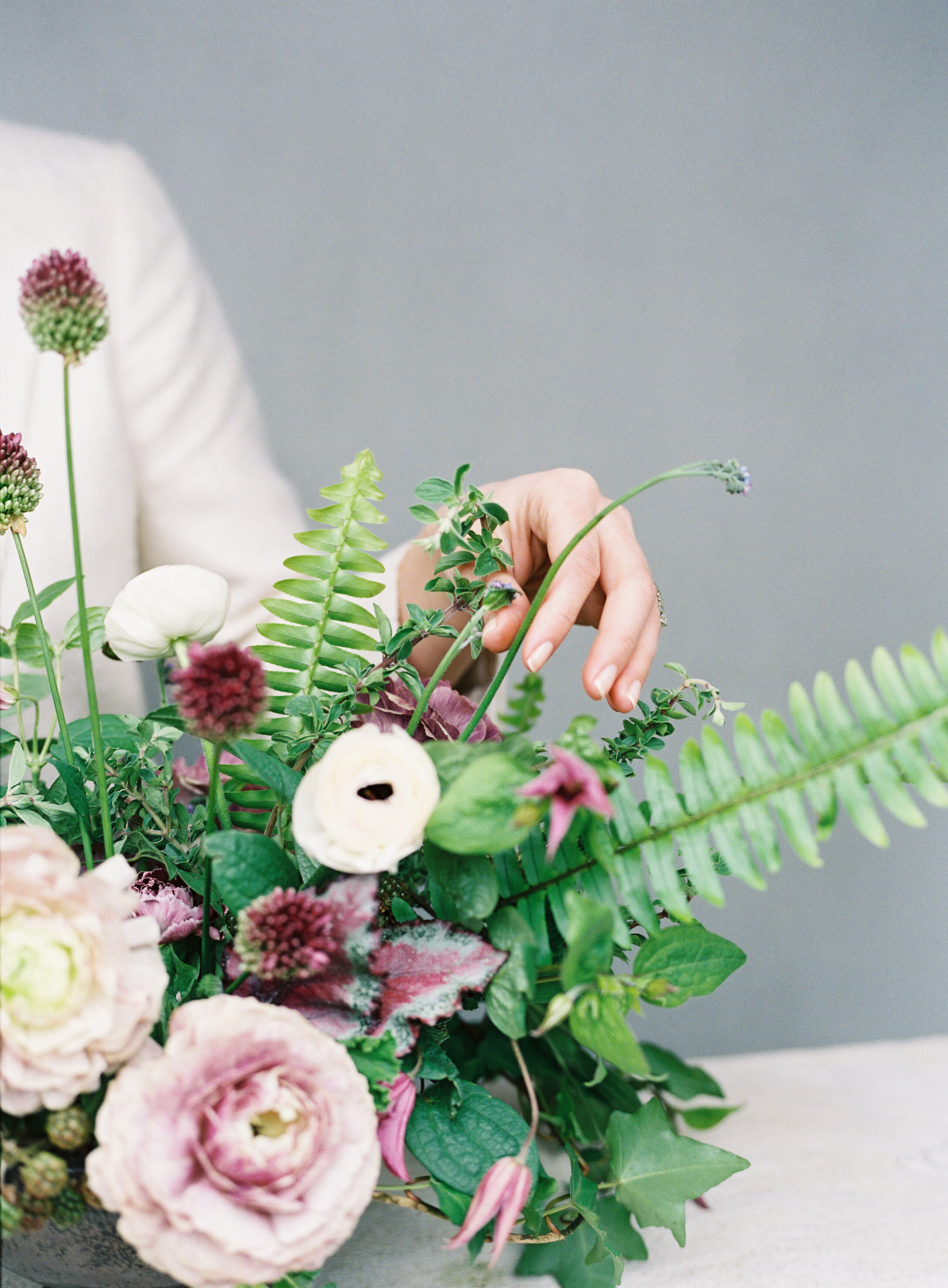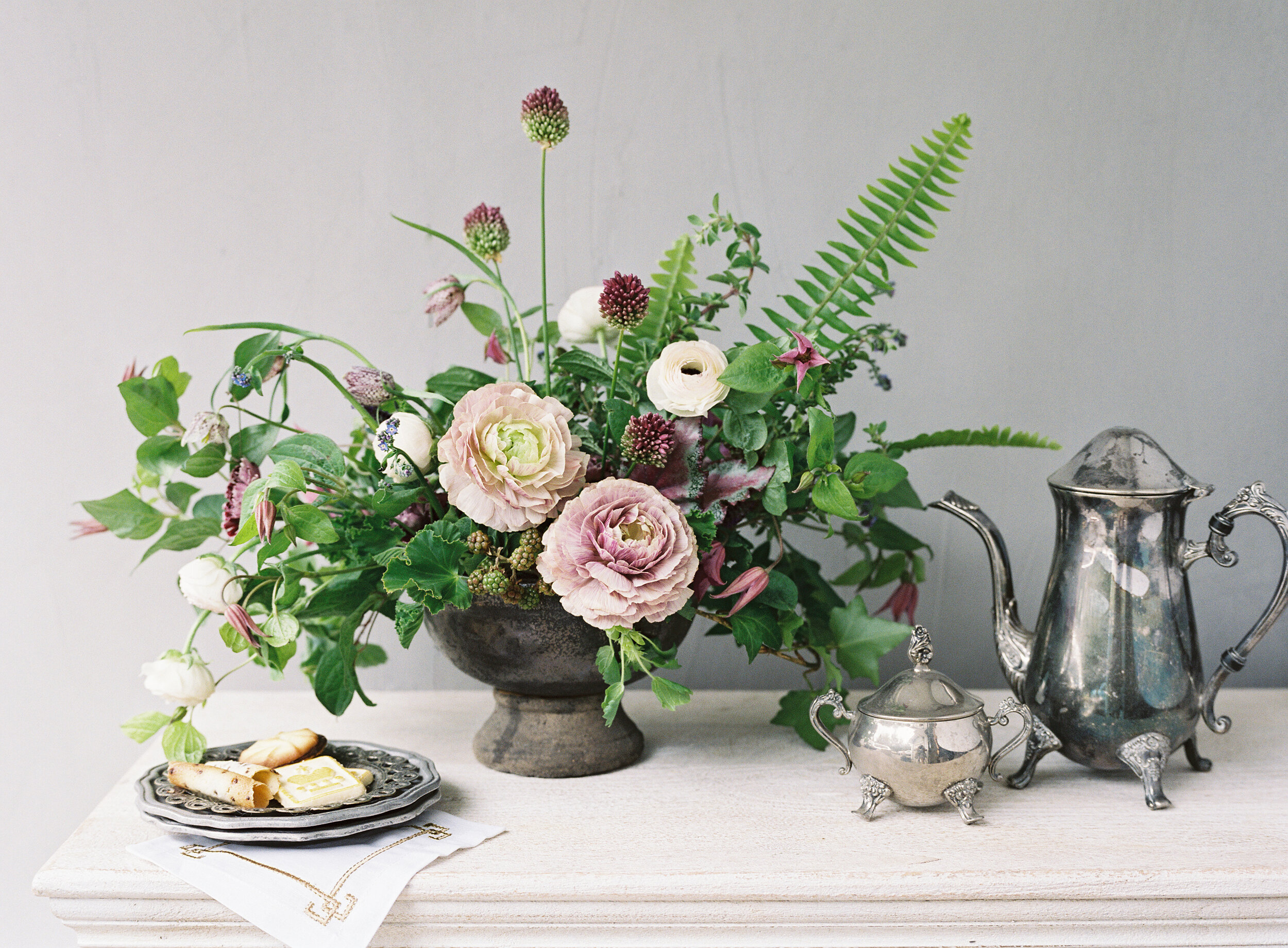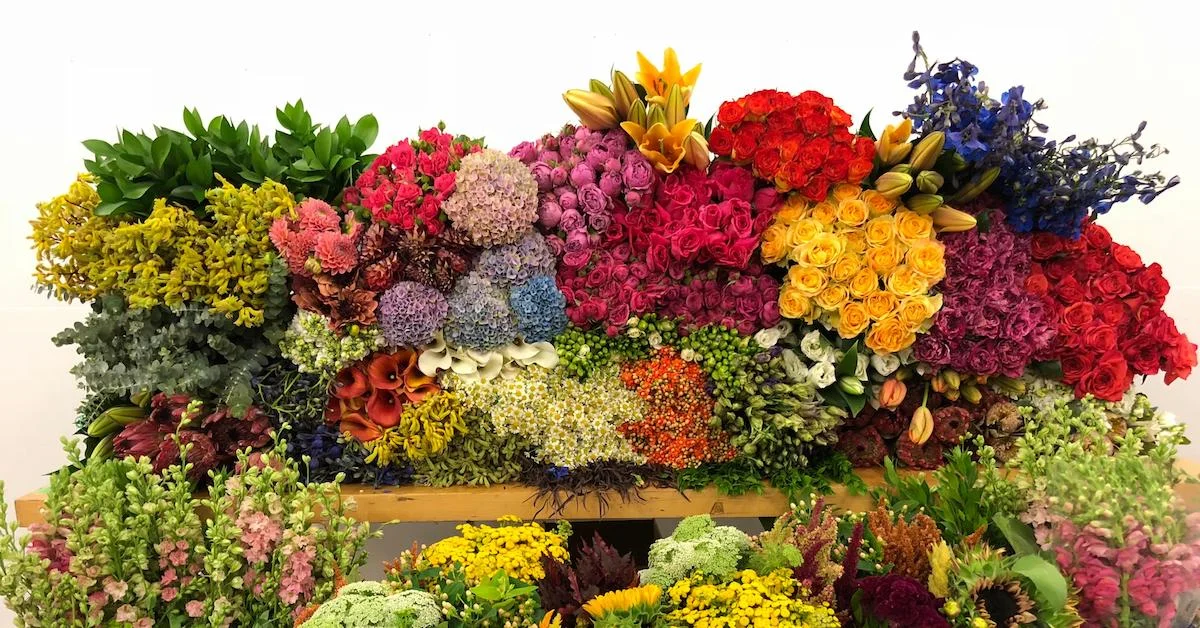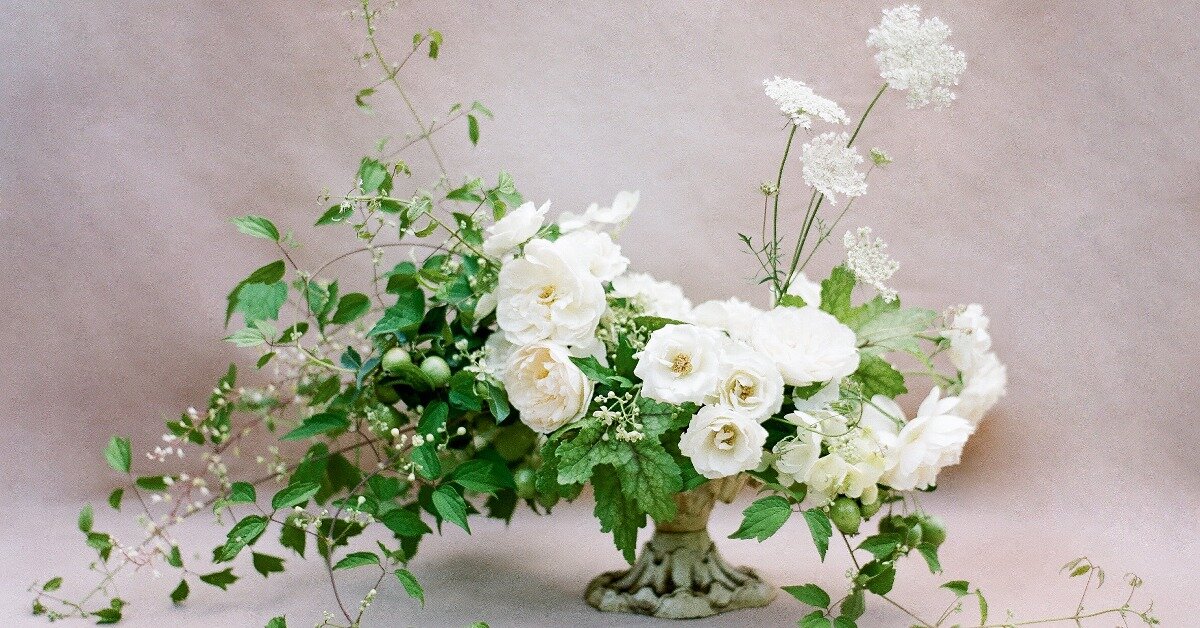Flower Frogs: Your Complete Guide on How to Use, Where to Buy, and More
Flower Frog in Water: photo by Heather Payne Photography
Whether you’re an experienced floral designer or a new flower fan looking to experiment with flower arranging, flower frogs (also called kenzans or pin frogs) are a floral arranger’s best friend.
They’re reusable, durable, eco-friendly, and lend themselves to helping you create gorgeous, lush garden-style floral designs—in addition to exquisite, minimalist floral creations.
In this comprehensive guide, you’ll learn:
And more!
This article is meant to act as a full and complete guide to using a flower frog (including helpful floral design tutorial videos!)—that way you can get all your questions answered in one place.
Feel free to use the links above to skip around to get your specific questions answered!
Hi there! Love flowers? Us too! We provide you with education to love the world through floral work. Learn more about how we can help you on your journey with flowers here.
Arranging with a flower frog: Heather Payne Photography
What Is a Flower Frog?
A flower frog is a type of floral mechanic, or an apparatus or technique used to construct floral arrangements and keep flowers in place. Flower frogs sit inside the floral container in the water and are traditionally known for their use in ikebana, the Japanese art of floral design. However, floral frogs have been adopted by flower lovers all over the world and are used in a variety of floral design styles.
In fact, these curious little floral mechanics are so well loved, that they are often sought after by collectors who search for vintage flower frogs in antique shops, on eBay and etsy, at garage sales, at flea markets, and more!
Discover industry-leading floral design tips and tricks and flower growing advice each week—including free tutorial videos! Over 36K floral pros and fans alike have signed up for our weekly newsletter.
What Is a Flower Frog Used For?
Flower frogs keep the stems of flowers secure as you strategically place and arrange the flowers or greenery in a vessel. They act as an anchor for a floral arrangement, allowing you to establish a foundation for your design and build upon that shape.
Flower frogs come in a variety of styles, but the most recognizable is often referred to as a kenzan or a pin frog, a metal circle base with metal pins that stick straight up from the base.
Where to Buy Flower Frogs
If you’re wondering where to buy flower frogs, wholesale or one at a time, here are some of our favorite ways to do so!
Thrift them!
Next time you go to a vintage store or thrift shop, antique store, or flea market, keep an eye out for vintage flower frogs. Familiarize yourself with the different types (included below) and what they look like, and you can snag them for great prices.
Check out Etsy and eBay.
Searching etsy for flower frogs and ebay for vintage pin frogs can be another way to thrift flower frogs conveniently.
Visit your local craft store.
If you’d like to try out a flower frog before you make a large long-term investment for your floral design work, you can find them at craft stores like Joanns, Michaels, and more. However, many of the lower-end, uncoated floral frogs are unable to withstand water exposure without rusting. And flowers drink up that rust-colored water and can become discolored, so watch out!
Visit one of our Team Flower favorites.
We really, really love the durable flower frog options from our friends at Floral Genius. Check out what they have available here!
Floral Designers Use Different Types of Flower Frogs
Types of Flower Frogs
When it comes to types of flower frogs to use in floral design, you have several to choose from! However, the style that allows for the most flexibility in floral design work is a traditional flower frog made of metal pins, which we’ll talk about in the majority of this article.
However, here’s a quick list of the different types of floral frogs available. (We’ll dive in deeper to each type below.)
Metal pin frog
Metal hairpin frog
Metal cage flower frog
Glass flower frog
Clay or ceramic flower frog
Plastic flower frogs
1. Metal Pin Flower Frog (Also Called a Kenzan or Pin Frog)
This style is one of the most popular by far, as it allows for the most variation and adaptability in stem placement. Stems can be placed in between the metal pins or directly on a pin, with the pin working to hold floral stems upright.
Metal pin frogs come in several different sizes and shapes. You can also pair your pin frog with appropriately sized pin cups that allow flower stems access to water without requiring a larger vessel, but more on that later!
Discover one floral designer’s playful work with the traditional kenzan in this article here.
2. Metal Hairpin Flower Frog
A variation on the classic kenzan or pin frog, the hairpin flower frog allows for an alternative that has flexible pins that hold the flowers and establish the shape of the arrangement.
The hairpin frog comes in different shapes and can also easily be paired with matching pin cups to offer stems access to water.
3. Metal Cage Flower Frog
This vintage style is shaped like a small cage that is set within the vessel for your floral arrangement. They’re fun to thrift at vintage shops and flea markets, and they allow for side placement of stems in a way that the metal pin and hairpin frogs do not.
However fun they are to collect and play with, most designers are easily able to recreate this same floral mechanic with a ball of chicken wire (although less durable), which we will touch on later in this article.
Completed Floral Arrangement Using Flower Frog: Photo By Heather Payne Photography
4. Glass Flower Frog
Glass flower frogs sure are pretty and do a fine job in the bottom of a vase holding stems in place. They come in lots of decorative, artful shapes.
Glass flower frogs also have the added bonus of being rust-free (of course!) and fairly weighty, which can help keep them in place. However, they do not have much flexibility with stem placement, so they’re most often used for hobby floral design or at-home arrangements rather than professional floral design work.
5. Clay or Ceramic Frog
Clay and ceramic frogs function similarly to glass flower frogs, and often come in fun, artistic, and interesting designs that collectors love.
But same as the glass flower frogs: They don’t allow for much flexibility in professional floral design work.
6. Plastic Flower Frog
Plastic flower frogs come in all shapes and sizes and mirror traditional pin frogs or kenzans or glass, clay, and ceramic frog styles. One of the biggest benefits of plastic pin flower frogs is that they are significantly more affordable than their metal predecessors but still reusable.
Plastic pin frogs can be helpful for event floral design work where your client is purchasing the full arrangement and vessel or when providing retail gift arrangements and the flower frog will not be returned to you. A bonus feature of some plastic pin frogs is that they have suction cups to help adhere them to the bottom of the container.
How to Use a Flower Frog
Okay, let’s get to the fun part: how to use a flower frog to create floral arrangements—gorgeous arrangements designed by you, in fact!
Step 1: First, gather your supplies.
You’re going to need a flower frog of your choosing, floral clay (also called floral putty), your favorite vessel, floral shears, water, and—of course—flowers!
If you’re not doing floral design for event or retail work (maybe you’re practicing your design skills, experimenting with a new container, or working on an arrangement for your home), you can omit the floral clay. However, that means your pin frog may shift while you’re working.
Adhere a Flower Frog with Floral Clay: Photo by Heather Payne Photography
Step 2: Next, secure the flower frog to the base of the vessel.
Again, you can skip this step if your arrangement isn’t traveling anywhere or is for practice or home use. But if you’re doing event floral work or making a floral delivery to a client, use floral clay on the base of your pin frog to attach the floral mechanic to the bottom of the container of your choice.
A quick note of caution: Be careful when handling the frog, because the pins can be sharp and could cut you depending on how much pressure you use when securing or arranging with it. It might be good to wear gloves for this step if you prefer. Once it’s in your container, add water to the vessel, and you’re good to go!
Step 3: Get designing!
Secure stems in the pins of the flower frog one at a time. We advise to arrange from the outside pins of the frog first, moving inward. Think “outside, in.”
The floral ingredients you begin arranging with will depend on the floral design style you’re working in, but we prefer to add our structural pieces (such as branches, greenery, and woody stems) first.
If you’re working in garden style floral design, start with establishing the shape of your arrangement through greenery and branches. If you’re using your flower frog for a more minimalist, ikebana-esque approach, you might begin designing by placing your focal flower(s).
How Do You Arrange Flowers in a Flower Frog?
Need more visuals? Here are three of our favorite Team Flower step-by-step flower arranging videos that use a flower frog as the foundational floral mechanic of the design. Take a look for helpful tutorials in using a pin frog to complete your floral arrangement!
Arranging Flowers Using Wire, Foam, and Frogs: Kelly Perry, experienced floral designer and founder of Team Flower, gives step by step instruction on how to use different floral mechanics, including flower frogs!
Certified American Grown Flowers in a Beautiful Floral Arrangement: In this video, Kelly gives a lesson in reflective floral design and uses a flower frog to create a gorgeous arrangement.
Complementary Colors in a Minimalistic Flower Arrangement: Here, you’ll learn how to utilize a flower frog in a minimalist arrangement with an interesting color scheme.
Learn design principles that will transform your florals with our online Principles and Elements of Design class. Master floral mechanics and the tips and tricks that will earn you income in floral design.
Advantages and Disadvantages in Arranging Flowers with Flower Frogs
Heather Payne Photography
While flower frogs make for an amazingly durable floral mechanic for creating gorgeous arrangements in many styles, they have both advantages and disadvantages when regularly used for professional floral design work.
Here are things to consider when deciding whether or not to use flower frogs for your next arrangement or event floral design work.
Advantages of Using Flower Frogs in Floral Arrangements
They’re a reusable investment. This traditional floral mechanic is reusable and easy to store. It can be a worthy investment for many professional floral designers.
They’re durable. As evident by how many working pin frogs can easily be found in vintage shops and flea markets, these little flower froggies are made to last. Even when compared to chicken wire (an incredibly versatile and reliable event floral design mechanic), they’ve got a longer life.
They’re eco-friendly and sustainable. If you’re steering away from foam use, flower frogs make a great option. And again, they’re a durable item that you don’t consistently have to buy more of, so they reduce waste over time.
They’re fun for your customers. If you do retail floral pieces, you could upsell your arrangements as a package with a reusable flower frog. Add a gifted step-by-step video or beautifully designed handout that teaches flower lovers how to use their new pin frog, and you’ve got a fun add for those receiving the arrangement.
They’re easy to hide in your design. When not using a transparent glass vessel, pin frogs are not easily seen. There’s not much to cover up, so that means you can focus on your flowers—and use less materials—rather than worrying about keeping your mechanics camouflaged.
They save you time. Every designer loves a time-saving flower hack, and flower frogs can save you design time. Since you’re not cutting and forming chicken wire and/or tape configurations for your vessel, you simply secure the flower frog and move forward in your work. (Pro tip: Kelly Perry of Team Flower prefers to buy flower frogs for event vessels she plans on reusing and renting out in the future. She simply secures the floral frog with putty and leaves it there—permanently!—saving even more time.)
They can allow for more secure transport. Traditional pin frogs or kenzans are able to hold stems more securely than the chicken-wire method. This is a huge win when transporting truck-fulls of flowers to events or making floral deliveries.
Looking to master new event floral design skills? Check out our Reception and Centerpieces online class!
Heather Payne Photography
Disadvantages of Using Flower Frogs for Floral Design
They have a significant upfront cost. Especially when compared to chicken wire or floral foam, flower frogs are definitely a long-term investment. Designers must factor in the cost of the frog, which varies on the size, the price of floral putty or clay needed to secure the frog, and what it costs to replace it if it’s lost in event floral design work.
They can expose you to lead in minor amounts. Frogs are built to last and avoid rusting, therefore, most frog bases contain lead. Some frogs have a protective coating while others have uncoated metal exposed. However, professional florists are well-trained in taking care of exposure to chemicals and other irritants. Wearing gloves or carefully washing your hands after use minimizes concern.
Must return for strike (or event breakdown) to retrieve. Floral frogs aren’t a disposable floral mechanic—which is one of their primary benefits, especially from a sustainability standpoint. But if a client wants to purchase the vessels used in the event (but not the mechanics), you’ll need to return after the event to obtain your floral frogs so you can reuse them.
They’re not as flexible as other mechanics. This can be a big downside for some, but flower frogs aren’t as flexible (literally and figuratively) as chicken wire or creating your own tape grid on a vessel. (However, they can be paired with both if you like to have that additional support and flexibility!)
They can be difficult to clean. While floral designer Kelly Perry simply leaves her flower frogs attached to the vessel and disinfects them along with the container, if you’re removing your frogs and disinfecting it can take some time. In addition, they can get little pieces of botanical material stuck between the pins that need to be removed.
Caring for and Troubleshooting Your Flower Frogs
We can’t say this enough: The durability and reusability that flower frogs offer as a floral mechanic is almost unbeatable.
If you’ll be using your pin frogs for a lifetime of floral work, you’re bound to have questions about upkeep from time to time. Here are our best tips and tricks for common issues, but please share your own with us on Instagram or the Team Flower Community!
Master complex floral mechanics and solve everyday business problems. Our newsletter sends top-quality flower education to your inbox weekly. Design tricks and business tips galore! Sign up today.
Heather Payne Photography
How do you remove rust from a flower frog?
Whether you’ve just scored a set of vintage pin frogs for your floral design work or your well-loved kenzans are showing signs of wear, there are a couple ways to combat rust and avoid rusty water, especially for thirsty cream-colored flowers!
Try a CLR soak and a scrub with a wire brush. Make sure to wear appropriate safety gear!
Spray paint a rust-proof and water-proof coating to refurbish your flower frogs. If you do this, make sure they have more than enough time to set and dry before use with flowers, and make sure to test the spray-painted frogs with light colored blooms before using them for professional work.
When in doubt, if you’re able, invest in flower frogs with durable rust-proof coatings—such as the ones from Floral Genius.
Help! I have bent metal pins in my flower frog!
Thankfully, this is a simple fix. It can happen to anyone! Use a dull knife, such as a butter knife from your kitchen cutlery drawer, to bend the prongs or picks back into straight-up shape.
But Floral Genius (again, our favorite maker of flower frogs!) has this incredibly little handly floristry tool: a flower frog pin straightener! Every pin frog fan needs one of these in their toolkit.
How do I keep my flower frog secure in the container?
Floral putty, also called floral clay or sticky clay, will do the trick! This is our favorite way to ensure a secure frog (especially when transporting flowers to and from events), but we’ve also seen people weigh frogs down by using marbles or clean pebbles from a garden center.
I’d like a little more structure than a flower frog. How do I keep my stems from shifting at the top of the container?
Some designers like to work with chicken wire or a tape grid in addition to a flower frog for a little extra structure. Simply tape a grid on the top of your container or add a small roll of chicken wire to your floral mechanics. Alternatively, something like the Holly Chapple egg on top of a container with a flower frog secured in the bottom can be a great move!
Heather Payne Photography
How do I conceal a flower frog in a transparent container, such as a glass vase?
This is tricky, and it’s one of the major downsides to traditional pin frogs. Truly, the most elegant, foolproof way to conceal a flower frog is to avoid use of a transparent container.
But if it works with the overall design of your event, using marbles or glass beads would conceal the mechanics and add additional visual interest.
Alternatively, using greens in the base of the arrangement to conceal the flower frog would also work. However, it’s not ideal to leave greens in the water for extended periods of time pre-event or pre-arrangement delivery, as that can cause bacterial growth.
Most Important Takeaway: Flower Frogs Are Durable, Efficient, and Fun!
Whether you’ve been in the floral industry for forty years or forty minutes—and whether you’re a professional floral designer or a flower-loving hobbyist—traditional pin frogs can give you control and confidence in creating exquisite floral arrangements.
They’re reusable, durable, and fun, while lending themselves as a “workhorse” of a floral mechanic for a variety of floral design styles, saving professional designers time and resources.
We’d love to see what you’re creating with your flower frogs and hear the tips and tricks you’ve come up with when using them in your floral work. Join in the conversation over at the Team Flower Community, or find us on Instagram and share your thoughts!

